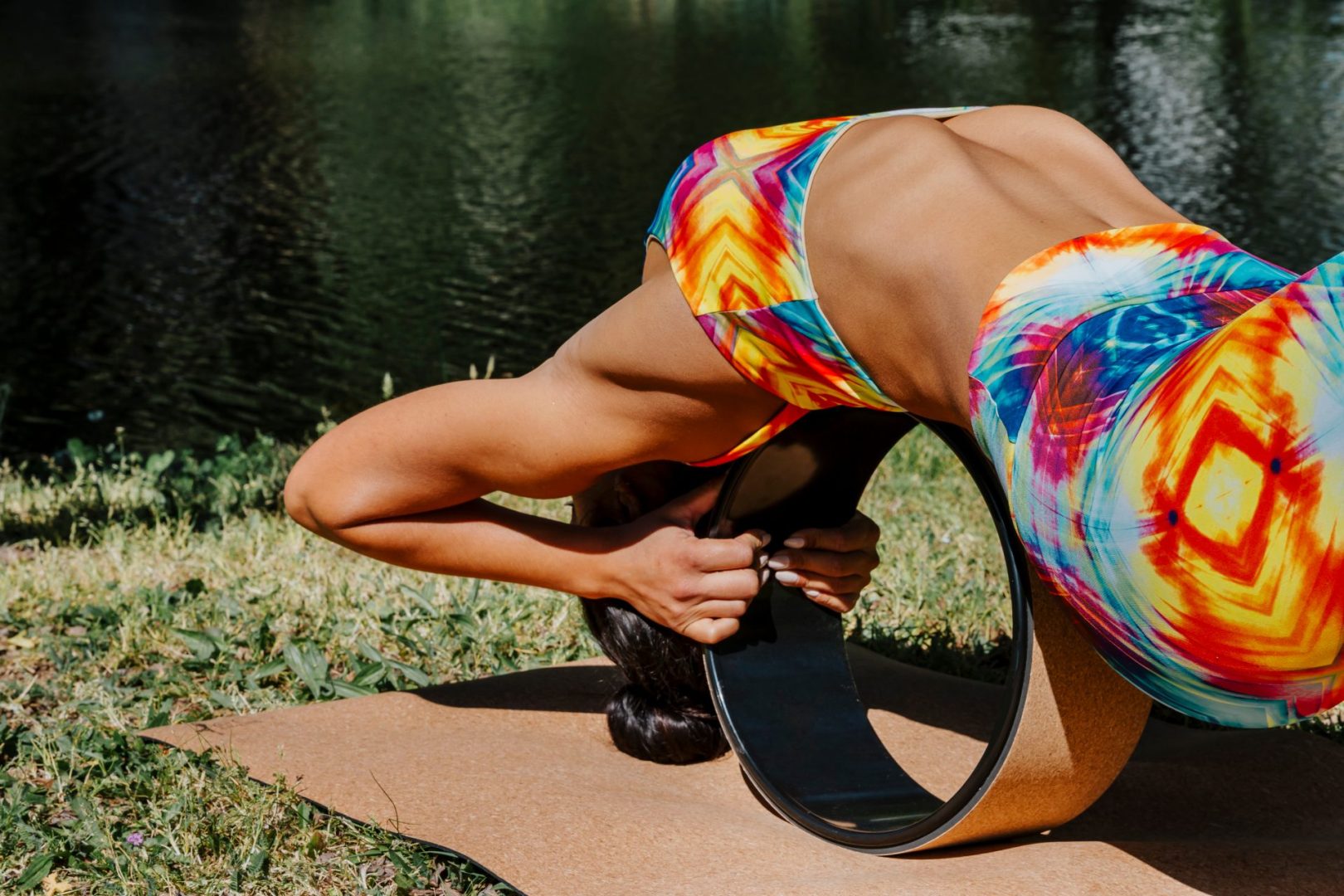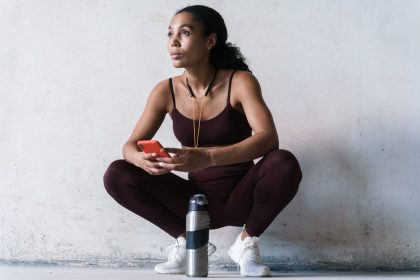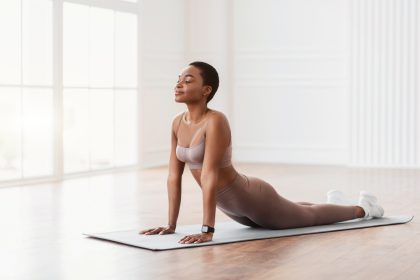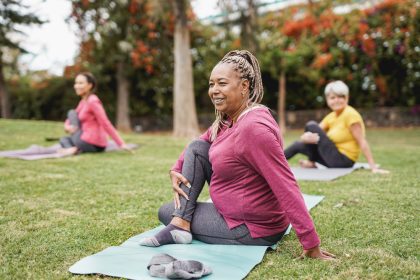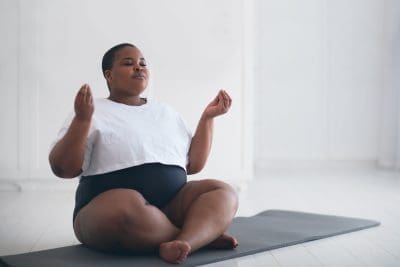Hip flexors connect the upper thigh to the lower spine and pelvis, playing a crucial role in walking, running, and maintaining proper posture. Modern lifestyles involving prolonged sitting create chronically tight hip flexors that can lead to lower back pain, poor posture, and restricted movement. The yoga wheel offers a unique solution for addressing this common problem through targeted poses that provide deep, sustained stretching.
The curved design of the yoga wheel allows for gentle backbends and hip opening movements that would be difficult to achieve with traditional stretching methods. This tool creates the perfect angle for accessing tight hip flexor muscles while supporting the body’s natural alignment during the stretching process.
Understanding how to use the yoga wheel effectively for hip flexor release can transform your flexibility, reduce pain, and improve overall movement quality. These poses work by creating space in the hip joint while lengthening the muscles that have become shortened from prolonged sitting or repetitive activities.
Understanding hip flexor anatomy and tightness
The hip flexor group includes several muscles, with the psoas and rectus femoris being the primary culprits in most cases of tightness. These muscles attach to the spine and pelvis, connecting to the upper thigh bone to create hip flexion movement. When these muscles become tight, they can pull on the lower back and create a cascade of postural problems.
Tight hip flexors often result from prolonged sitting, which keeps these muscles in a shortened position for hours at a time. Over time, the muscles adapt to this position, losing their ability to fully lengthen when standing or moving. This adaptation creates tension that affects the entire kinetic chain, from the feet to the head.
The yoga wheel addresses hip flexor tightness by providing a stable surface that allows for passive stretching while maintaining proper spinal alignment. The circular shape creates a natural curve that matches the body’s anatomy, making deep stretches more accessible and comfortable than traditional methods.
1. Supported hip flexor lunge stretch
Position the yoga wheel vertically on the ground and step into a lunge position with your back foot resting on top of the wheel. The wheel should support your back foot while allowing your hip flexors to lengthen as you sink into the lunge position.
Place your hands on your front thigh or on the ground for support while gradually deepening the stretch. The wheel allows you to maintain this position comfortably while the hip flexors slowly release. Focus on breathing deeply and allowing gravity to assist in the stretching process.
This pose targets the psoas and rectus femoris muscles while providing stability that makes the stretch more accessible than traditional lunge variations. The wheel’s support allows you to hold the position longer, creating more effective muscle lengthening over time.
2. Reclined hip flexor release
Lie on your back with the yoga wheel positioned under your lower back, just above the pelvis. Allow your body to drape over the wheel while extending one leg straight and drawing the opposite knee toward your chest. This position creates a deep stretch in the hip flexors of the extended leg.
The wheel’s curve naturally opens the hip joint while providing support for the spine during the stretch. Switch legs after holding for 60-90 seconds to ensure balanced flexibility development. The passive nature of this stretch allows for deep muscle release without strain.
This position is particularly effective for people who experience lower back pain related to tight hip flexors, as it addresses both the muscle tightness and spinal alignment simultaneously. The wheel’s support makes this stretch accessible even for those with limited flexibility.
3. Wheel-assisted couch stretch variation
Position yourself in a lunge with your back foot elevated on the yoga wheel, similar to the traditional couch stretch but with added mobility from the wheel’s round surface. The wheel allows for subtle movements that help target different areas of the hip flexor complex.
Rock gently forward and backward while maintaining the lunge position, using the wheel’s curved surface to create varying angles of stretch. This dynamic element helps address muscle fibers that might not be reached with static stretching alone.
The wheel’s instability requires gentle activation of stabilizing muscles while still allowing deep hip flexor lengthening. This combination of stability challenge and flexibility work creates more comprehensive hip mobility improvement than static stretching alone.
4. Supported bridge with hip flexor emphasis
Lie on your back with the yoga wheel positioned under your shoulder blades. Lift into a supported bridge position while extending one leg straight and allowing it to drop toward the floor. This creates an intense stretch in the hip flexors while the wheel supports your upper body.
The wheel allows you to maintain the bridge position without strain while focusing on the hip flexor stretch. The elevation created by the wheel increases the stretch intensity compared to floor-based variations. Hold for 45-60 seconds before switching legs.
This pose combines the benefits of spinal extension with targeted hip flexor stretching, addressing two common areas of tightness simultaneously. The wheel’s support makes it possible to hold the position long enough for effective muscle release.
5. Lateral hip flexor stretch with wheel support
Position the yoga wheel horizontally and lie sideways over it, allowing the wheel to support your ribcage while extending your top leg behind you. This creates a lateral stretch that targets the hip flexors from a different angle than traditional stretches.
The wheel’s curved surface allows your body to drape naturally while creating space in the hip joint. Use your bottom arm for support while focusing on lengthening through the extended leg. This angle targets muscle fibers that are often missed in forward-facing stretches.
Hold this position for 60-90 seconds before switching sides. The lateral approach helps address three-dimensional tightness in the hip flexor complex, contributing to more complete mobility restoration.
6. Dynamic hip flexor mobilization
Kneel with the yoga wheel positioned in front of you and place your hands on the wheel for support. Step one foot forward into a lunge position while rolling the wheel slightly forward and backward to create gentle movement through the hip flexors.
This dynamic approach helps improve mobility while strengthening the muscles in their lengthened position. The wheel provides stability while allowing controlled movement that promotes better tissue quality and joint mobility.
Perform 8-10 gentle rolling movements in each direction before switching legs. This technique helps prepare the hip flexors for deeper static stretches while improving functional movement patterns.
7. Wheel-supported warrior one variation
Stand with the yoga wheel positioned against your lower back and step one foot forward into a modified warrior one pose. The wheel supports your spine while allowing you to sink deeper into the hip flexor stretch of the back leg.
Use the wheel’s support to maintain proper alignment while focusing on opening the front of the hip. The vertical position of this stretch targets the hip flexors differently than floor-based poses, creating complementary benefits to horizontal stretches.
Hold for 45-60 seconds while breathing deeply, then switch sides. This standing variation helps integrate hip flexor mobility into functional movement patterns, making the flexibility gains more applicable to daily activities.
8. Restorative hip flexor release
Lie face down with the yoga wheel positioned under your hips, allowing your body weight to create gentle pressure on the hip flexor attachment points. This passive position encourages muscle release through sustained pressure and gentle stretching.
Adjust your position on the wheel to target different areas of the hip flexor complex. Some people find relief by positioning the wheel slightly higher or lower depending on their specific areas of tightness. Hold for 2-3 minutes while focusing on deep, relaxed breathing.
This restorative approach allows for deep tissue release without active stretching effort. The sustained pressure helps break up adhesions and trigger points while the gentle stretch encourages muscle lengthening.
Proper wheel selection and safety considerations
Choosing the right yoga wheel size and firmness affects the effectiveness and safety of hip flexor stretches. Wheels typically range from 6 to 12 inches in diameter, with larger wheels providing gentler curves that may be more suitable for beginners or those with significant tightness.
Firmness also varies between wheels, with softer wheels providing more comfortable pressure distribution while firmer wheels offer more precise targeting of tight areas. Consider your flexibility level and comfort preferences when selecting a wheel for hip flexor work.
Always warm up before using the yoga wheel for deep stretches, as cold muscles are more prone to injury. Start with gentle movements and gradually increase the intensity of stretches as your muscles warm up and begin to release.
Creating an effective routine
Developing a consistent yoga wheel routine for hip flexor release requires balancing different types of stretches and movements. Combine static holds with dynamic movements to address both muscle length and tissue quality. Aim for 15-20 minutes of focused hip flexor work 3-4 times per week.
Begin each session with gentler poses before progressing to more intense stretches. This progression allows your body to adapt gradually while maximizing the benefits of each position. End sessions with restorative poses to promote relaxation and integration of the flexibility gains.
Track your progress by noting improvements in hip flexor length, reduced lower back tension, and better overall movement quality. These indicators help you adjust your routine based on your body’s response and continued needs.
Integrating wheel work with daily activities
The benefits of yoga wheel hip flexor work extend beyond the stretching session when integrated with daily movement awareness. Take frequent breaks from sitting to perform gentle hip flexor stretches, even without the wheel. This prevents the muscles from tightening throughout the day.
Focus on maintaining better posture during daily activities, using the improved hip flexor length to support proper spinal alignment. The mobility gained through wheel work should translate into better movement quality during walking, climbing stairs, and other daily activities.
Consider using the yoga wheel for brief stretching sessions during work breaks or before bed to maintain the flexibility gains achieved during longer sessions. Consistency in addressing hip flexor tightness yields better long-term results than sporadic intensive efforts.
Troubleshooting common challenges
Some people experience discomfort when first using a yoga wheel for hip flexor stretches. This often results from muscles that are extremely tight or from using the wheel too aggressively. Start with shorter hold times and gentler positions, gradually increasing intensity as your body adapts.
If you experience lower back pain during wheel-assisted stretches, ensure that you’re maintaining proper spinal alignment and not forcing the stretch beyond your current flexibility level. The wheel should support your body’s natural curves rather than creating excessive extension.
Adjust the wheel position if you feel pressure in uncomfortable areas such as bony prominences or sensitive tissues. The goal is to target the hip flexor muscles specifically while maintaining comfort throughout the rest of the body.
Long-term benefits and maintenance
Consistent yoga wheel practice for hip flexor release can lead to significant improvements in posture, reduced lower back pain, and enhanced athletic performance. These benefits develop gradually over weeks and months of regular practice, making consistency more important than intensity.
Maintain your hip flexor mobility by incorporating wheel work into your regular fitness routine even after achieving your initial flexibility goals. Hip flexors tend to tighten again with prolonged sitting or repetitive activities, making ongoing maintenance essential for long-term benefits.
The investment in a quality yoga wheel and consistent practice pays dividends in improved movement quality, reduced pain, and better overall physical function. These tools provide an accessible way to address one of the most common sources of modern movement dysfunction, making them valuable additions to any wellness routine.

